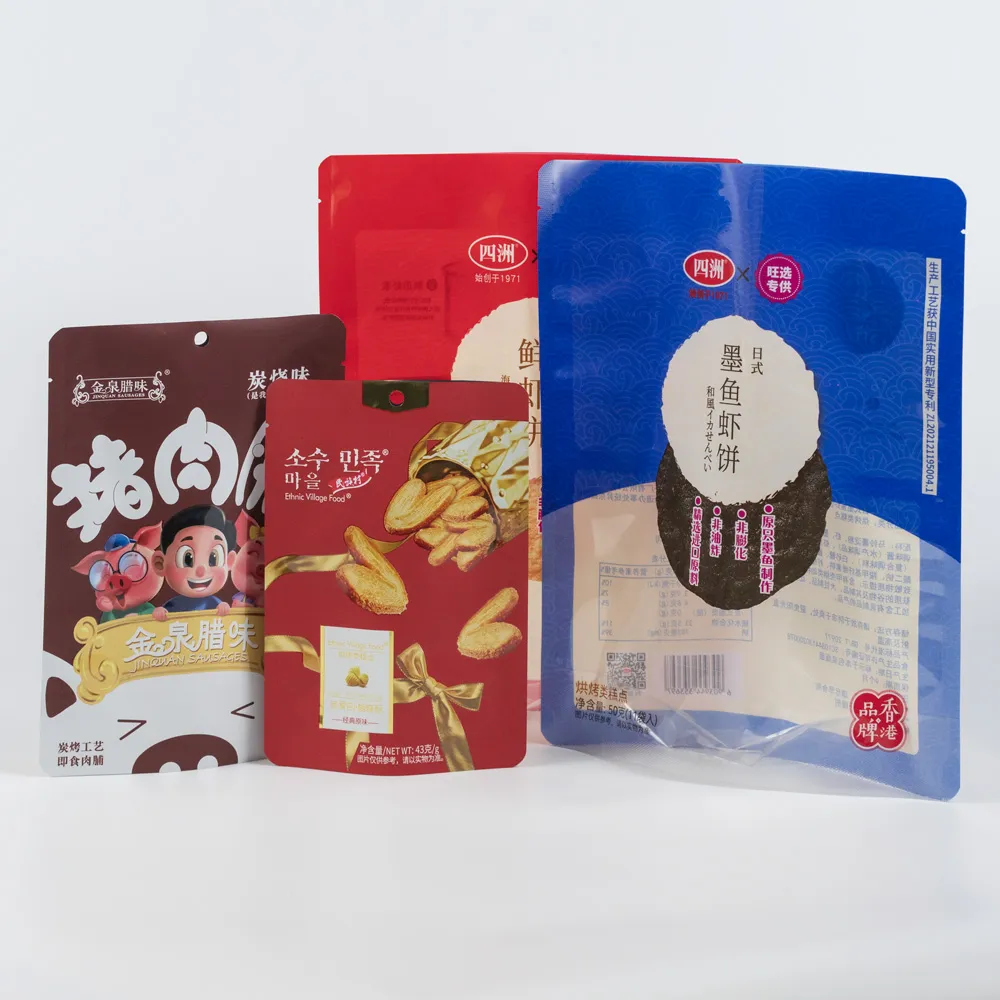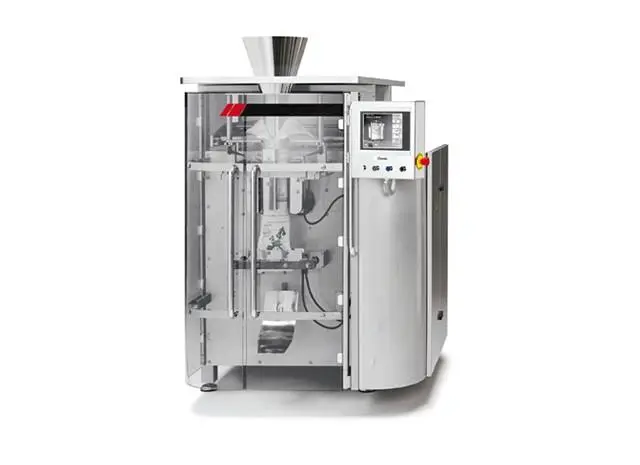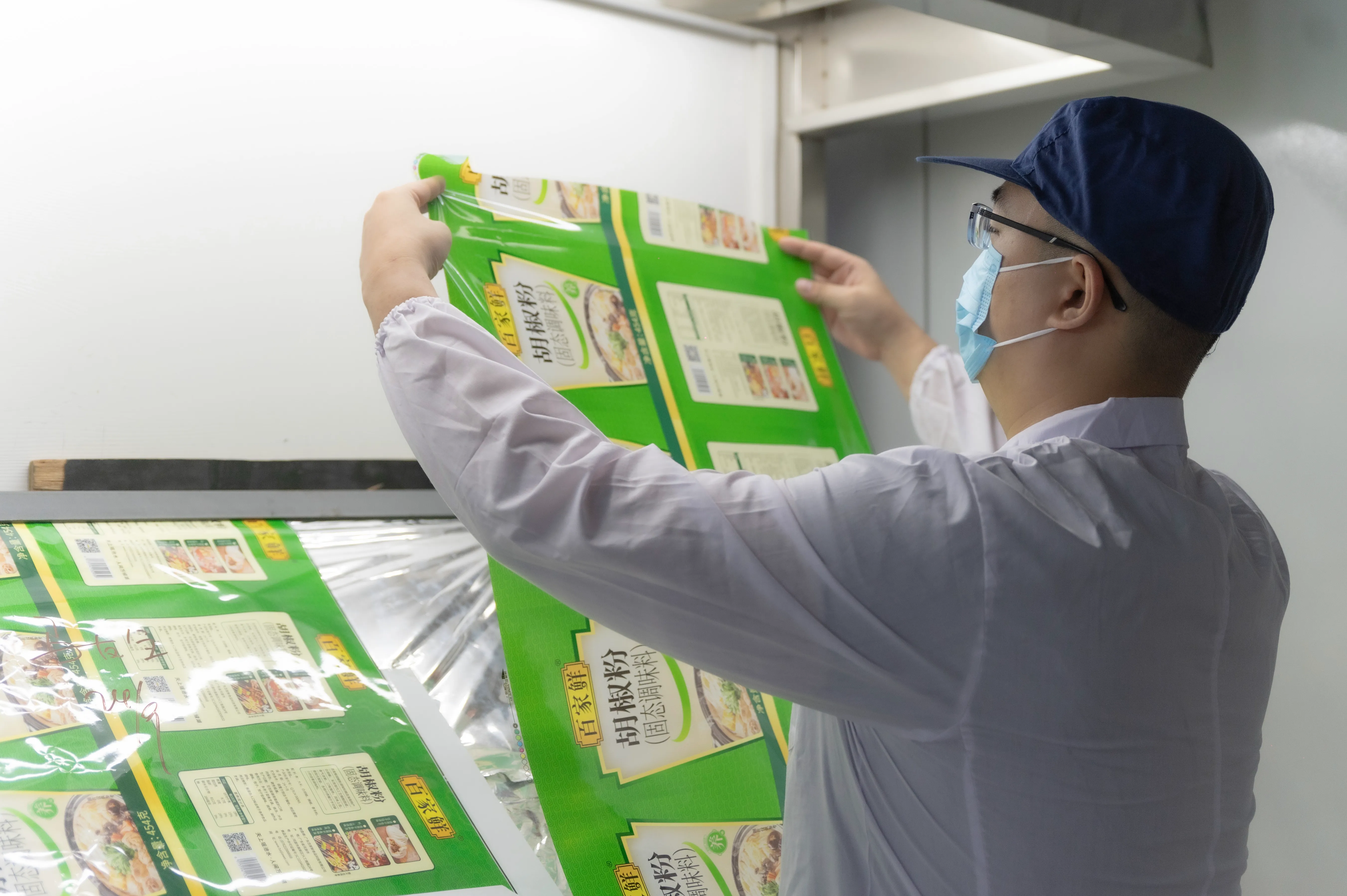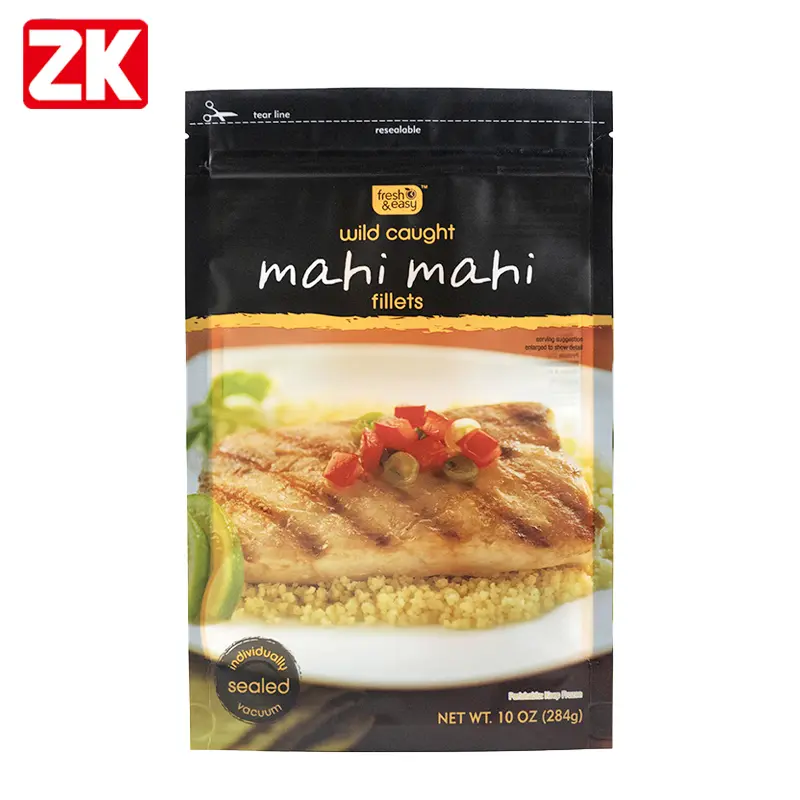يُعد إحكام غلق الحقيبة الواقية بشكل صحيح أمرًا أساسيًا لحماية المنتج ومدة الصلاحية وسمعة العلامة التجارية. هذا الدليل، الذي ساهمت به شركة Zhongjia Printing، وهي شركة خبراء في تصنيع العبوات المرنةص، يغطي أنواع مانعات التسرب ومعلمات العملية الحرجة والمعدات وطرق الاختبار ونصائح استكشاف الأخطاء وإصلاحها التي يمكن للمصنعين ومهندسي التغليف الاعتماد عليها.
المعرفة الأساسية لحقيبة الوقوف
كيس الوقوف عبارة عن عبوة مرنة مصممة للوقوف على الرفوف. تشتمل الطبقة المركبة النموذجية على طبقة خارجية قابلة للطباعة (BOPP/PET)، وطبقة حاجزة (رقائق الألومنيوم/إيفوه أو PET المغلفة بالألومنيوم)، وطبقة مانعة للتسرب (PE/CPP). توجد الأختام في الألواح العلوية والسفلية والزاوية؛ وتتطلب السحابات والفوهات والفوهات والأشرطة المانعة للتلاعب خطوات ختم إضافية.
أنواع الأختام وأماكن استخدامها
- الأختام الحرارية (الحرارية): الأكثر شيوعًا؛ إذابة/ختم الطبقة الداخلية البلاستيكية الحرارية.
- الأختام الدافعة: دفعات طاقة قصيرة المدة - مفيدة للأغشية الرقيقة أو وحدات مقاعد البدلاء.
- أختام القضبان الساخنة المستمرة: للختم المستمر عالي السرعة، وغالبًا ما يكون ذلك على الماكينات الدوارة.
- اللحام بالموجات فوق الصوتية: للأغشية غير القابلة للغلق الحراري أو لتجنب الإجهاد الحراري.
- لحام بارد/موانع تسرب لاصقة: يُستخدم عندما تؤدي الحرارة إلى تلف المنتج أو طبقات الحاجز.
- لحامات عنق الفوهة وأشرطة التلاعب: ختم المحطة المتخصصة مع اختبارات عزم الدوران والتسرب.
تشريح الختم والمعايير الحرجة
توازن كل وصفة ختم ناجح بين أربعة متغيرات: درجة الحرارة, زمن المكوث (أو زمن الدورة), الضغطو عرض الختم. العوامل الحاسمة الأخرى هي أسطح مانع التسرب النظيفة وكيمياء مانع التسرب الصحيحة. حدد دائمًا وصفة البداية من بيانات مورد المواد، ثم تحقق من صحتها بالاختبارات.
المفاهيم الرئيسية:
- نافذة ساخنة - نافذة لاصقة ساخنة: الوقت الذي يتمتع فيه الختم المنصهر بالقوة الكافية لتحمل المناولة.
- قوة الختم البارد/التقشير: كيف يعمل الختم بعد التبريد.
- عرض الختم: تعمل الأختام الأوسع على توزيع الضغط وتحسين مقاومة التسرب، ولكنها تضيف مواد إضافية.

نظرة عامة على المعدات
المعدات الشائعة لإحكام الإغلاق أكياس الوقوف تشمل:
- ماكينات VFFS المزودة بفكين مدمجين مانعين للتسرب والتحكم في درجة الحرارة PID.
- ماكينات ختم شريطية أو دوارة مستمرة أو دوارة للإنتاجية العالية جدًا.
- ماكينات منع التسرب الدافعة للنماذج الأولية وعمليات التشغيل منخفضة السرعة.
- آلات لحام بالموجات فوق الصوتية للأفلام المتخصصة.
- وحدات MAP/التفريغ الهوائي MAP/التفريغ الهوائي المعدل للغلاف الجوي.
الأجهزة: تعد وحدات تحكم PID، ومقاييس القوة/الضغط، وأجهزة تسجيل البيانات ضرورية للتحكم في العملية.

إعداد العملية خطوة بخطوة
التحقق من قطعة الفيلم وإعداد السطح.
قبل تشغيل حقيبة الوقوف المهمة، تأكد من رقم دفعة الفيلم مقابل بطاقة المهمة وافحص البكرات بحثًا عن العيوب (تلوث الحواف والتجاعيد والغبار). امسح أو قم بنفخ منطقة الختم المقصودة بقطعة قماش خالية من الوبر أو الهواء المضغوط المفلتر - الملوثات هي السبب الأكثر شيوعًا لضعف الأختام. قم بتسجيل مجموعة الأغشية واتجاه جانب الطباعة وأي قيمة ديناميات معالجة بالإكليل/البلازما في سجل المهمة.
محاذاة الويب والتحكم في الشد.
قم بربط الشبكة وتأكد بصرياً من علامات التسجيل ومحاذاة المجمعة ل حقيبة الوقوف التنسيق. اضبط شد الشبك بشكل متحفظ للتشغيل الأول؛ حيث يؤدي الشد المفرط إلى تمديد منطقة الختم ويسبب التجاعيد، بينما يسمح الشد القليل جدًا بالطي. استخدم مؤشرات الشد وبكرات التوجيه في الماكينة للحفاظ على توسيط الرقاقة في مركزها عبر محطة الختم ولاحظ نقطة ضبط الشد في الوصفة.
وضع وصفة ختم البداية.
قم بإدخال درجة الحرارة الموصى بها من مورد الرقائق/الفيلم/البطانة المغلفة ووقت السكون (وقت الإغلاق) والضغط كخط أساس. في حالة عدم وجود بيانات، ابدأ بدرجة حرارة متواضعة وقم بزيادة الطاقة تدريجيًا بدلاً من البدء "ساخنًا". تأكد من أن أوجه شريط مانع التسرب نظيفة ومسطحة؛ حيث تؤدي الشقوق أو التراكمات إلى حدوث أختام غير متساوية تظهر بشكل خاص على حقيبة الوقوف الجزء السفلي ومناطق التقوية.
تشغيل مصفوفة اختبار مضبوطة.
قم بتغيير معلمة واحدة في كل مرة (درجة الحرارة ← السكون ← الضغط ← عرض السدادات). لكل حالة، قم بتشغيل دفعة صغيرة (10-20 ختم) وقم بتسمية العينات بمعرفات الحالة. قم بالزيادة بخطوات صغيرة حتى تتمكن من عزل التأثيرات بوضوح.
إجراء اختبار اللصق الساخن والتقشير.
قم على الفور بإجراء فحوصات اللصق الساخن واختبارات التقشير التدميرية على عينات تمثيلية، بالإضافة إلى فحوصات التسرب غير التدميرية (الصبغة أو التفريغ أو الغمر). كرر المعلمات حتى تفي الأختام بمعايير الالتصاق الساخن وقوة التقشير والتسرب.
التكرار للقبول.
استخدم نتائج الاختبار لضبط المعلمات - ارفع درجة الحرارة أو فترة المكوث إذا كانت الأختام باردة؛ قلل إذا أظهر الغشاء احتراقًا أو انسدادًا. تأكد من عدم وجود أي تشقق، وعدم وجود فراغات مرئية في التماسات، ومقبولية الالتصاق الساخن، وقوة التقشير تتوافق مع المواصفات الخاصة بك.
القفل والتوثيق والتحكم.
بمجرد التحقق من صحة الوصفة، قم بإقفال الوصفة في الماكينة، وقم بحفظ ورقة وصفة الختم مع مجموعة الأغشية المرتبطة بها، واطلب إعادة التحقق من صحة أي مجموعة أغشية جديدة أو أي تغيير بيئي كبير. قم بتدريب المشغلين على اتباع الوصفة المقفلة وإجراء فحوصات يومية للختم من أجل الاستقرار المستمر.

اختبار الختم ومقاييس الجودة
تنفيذ كل من الاختبارات المدمرة وغير المدمرة:
- اختبار التقشير (ASTM D1876/D903) - يقيس قوة الختم.
- اختبار الانفجار/الثقب - التحقق من النزاهة تحت الضغط.
- اختبار اللصق الساخن - تقييم قوة الختم مباشرة بعد الختم.
- اختبار دخول الصبغة أو اختبار تسرب الفقاعات - يعثر على قنوات متناهية الصغر.
تحديد حدود القبول وخطط أخذ العينات (AQL). دمج أجهزة الرؤية المضمنة وكاشفات التسرب في الفحوصات غير المتلفة 100% حيثما أمكن.
الأعطال والإصلاحات الشائعة
- أختام باردة/ضعيفة: زيادة درجة الحرارة/التخفيف أو تنظيف قضيب مانع التسرب؛ تحقق من توافق مانع التسرب.
- التصفيح: ناتج عن عدم توافق الرقائق أو فشل المادة اللاصقة - راجع مواصفات التصفيح.
- التجاعيد/الثغرات: افحص شد الشبكة، وبكرات التوجيه، ومحاذاة الفك.
- الحجب (التصاق الحبر الرطب): ضبط الفرن/المجفف أو تغيير نظام الورنيش/الحبر.
- التكسير بعد المعالجة (التجميد أو البسترة): إعادة تقييم هندسة السدادة وصيغة الغشاء.
نبذة عن شركة زونغجيا للتغليف

تتمركز شركة تشونغ جيا للطباعة على أنها خبير في تصنيع العبوات المرنةمع التركيز القوي على الاستدامة والابتكار. من خلال استخدام الطباعة بالحبر المائي، تقلل رقائق الرول الخاصة بنا من انبعاثات المركبات العضوية المتطايرة وتقلل من التأثير البيئي مع الحفاظ على أداء الألوان الزاهية وسلامة المنتج.
نحن متخصصون في حلول التعبئة والتغليف بالحبر المائي المخصصومساعدة العلامات التجارية على تحقيق تغليف صديق للبيئة وجاهز للسوق على حد سواء، وتحقيق التوازن بين المرئيات عالية الجودة وممارسات الإنتاج المسؤولة.
الخاتمة
ختم حقيبة الوقوف الموثوقية هي عملية اختيار المواد، والإعداد الدقيق للمعدات، والاختبار القوي، والتحكم المنضبط في العملية. استخدم الخطوات المذكورة أعلاه لتطوير وصفة ختم قابلة للتكرار، والتحقق من صحتها من خلال الاختبارات المدمرة وغير المدمرة، ودمج مراقبة الجودة المضمنة لمنع التسرب. وللقيام بخطوة عملية تالية، ضع خطة تجريبية قصيرة: اختبر دفعات الأغشية، وضع اللمسات الأخيرة على وصفات الختم، وقم بإجراء تجارب على الأكياس المعبأة، وقم بتثبيت المعلمات في إجراءات التشغيل الموحدة - هذه هي الطريقة التي ينتقل بها المصنعون من النجاح العرضي إلى جودة الإنتاج الثابتة.
